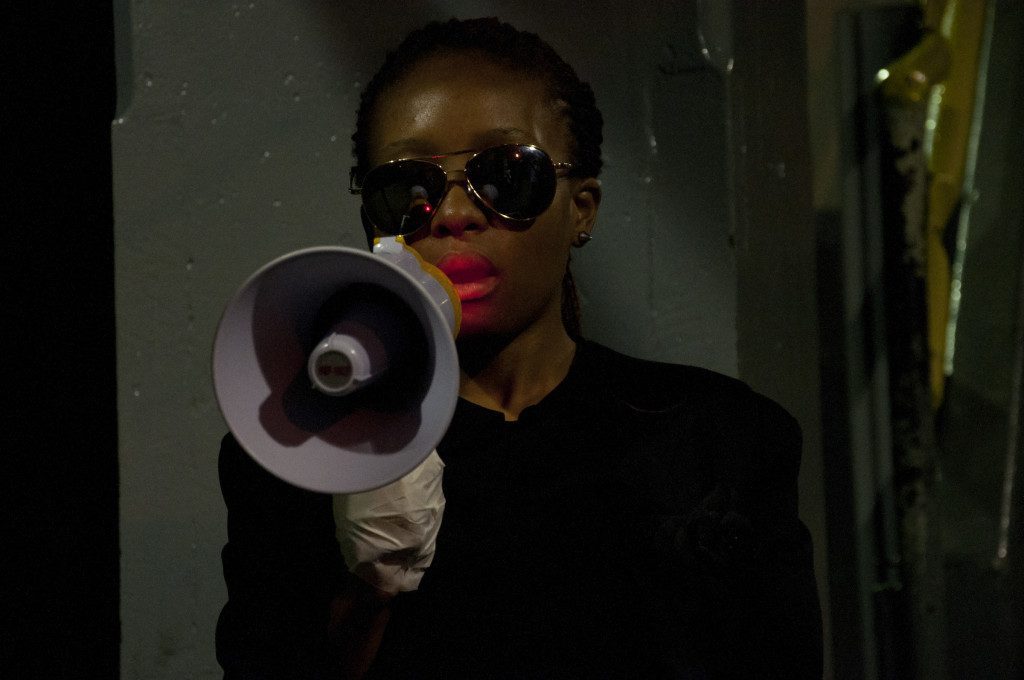C&’s Editors-in-Chief Julia Grosse and Yvette Mutumba reflect on the ideas of “the global” in the German art capital

Euridice Kala, Performance Tedet Time (From Compound to City), Public Acts, Johannesburg, 2014, ©Akona Kenqu
.
It is official: Gabi Ngcobo will be the curator of the next berlin biennale. The Berlin art scene is both surprised and delighted, impatient for her to join the group that defines itself as international “based in Berlin” cultural producers. The C& network was also thrilled at the news, and so are we, of course. But we are also prompted to ask: What does this actually mean? What is the issue of a Black, female, South African curator directing one of the art world’s “hippest” biennials?
When you examine Berlin’s exhibition calendar for the year ahead, one commonality is striking: institutions are pointedly trying to produce “politically correct” projects that are committed to artistic positions beyond Euro-America and that don’t shy away from “problematic issues” such as (post)colonialism, migration, and nationalism. Examples include Now is the Time of Monsters at the Haus der Kulturen der Welt; the solo exhibition of Kemang Wa Lehulere, Deutsche Bank’s Artist of the Year, at the bank’s Kunsthalle; and a major exhibition being planned at the Hamburger Bahnhof museum examining the “globality” of their collections. This last project is part of a broader trend of German museums exploring that question – at least for now, based on current funding priorities.
One of the longest commitments might be ifa Gallery’s yearlong project with the theme of “Colonial Legacy and Contemporary Society”, featuring distinguished names such as the installation artist Pascal Martine Tayou.
These few examples indubitably demonstrate that the German cultural landscape is (finally) starting to question its own contextual approaches and policies. But, what relevance does this really have in broader social contexts? How enduring is this after all?
Until mid-May this year, the German Historic Museum in Berlin is presenting an exhibition on German colonialism. There is plenty to say about that, but to give you a feel for where all our questions come from, here is an actual encounter one of us had while reading a text about Afro-German history in the exhibit. Suddenly a gallery assistant approached, asking: “Excuse me, do you speak German? You have to move a bit farther from the display, please.” As an Afro-German visiting an exhibition on colonialism, to be asked whether one speaks German – despite obviously reading a German text while leaning over a display about Afro-German history – is aggravating, to say the least, and symptomatic of a larger issue: the continuing stasis when it comes to the definition of who is and who is not German.
So what do all the above efforts mean in a country, a city, whose institutions are starting to speak “global”, but where moments like these still happen with significant frequency? Zooming in on the arts/cultural scene, it is clear that most producers and audiences are neither aware of these kinds of situations, nor of the concrete implications of notions such as (post)coloniality, migration, and racism. Their understanding rarely extends beyond the tendency of capitalizing on a “global art quota.”
Hey, don’t get us wrong. Berlin is a great, open, and international city. And a growing acknowledgement of art as global is undeniably a very positive development. We will surely also see this at the upcoming European art extravaganzas of documenta (Athens and Kassel), the Venice Biennale, and Skulptur Projekte Münster.
And the berlin biennale? Well, let’s be serious about it: having Gabi Ngcobo as its curator is a huge deal. The unfortunate thing is that when we talk to members of the “Berlin-based” art scene, it is a big deal because she is a Black, South African woman. This is unfortunate because it reflects the ongoing hierarchies within the art world, of which many are not even aware. Because, you know, they love that “someone like her” has made it, right?
We still live in an (art) world where a Euro-American “us” exists alongside a so-called “Global South Other.” So if the latter breaks into the former’s system – it is unfortunately still a big deal. Of course it is fantastic simply because she is a great exhibition-maker and thinker. And, at the upcoming berlin biennale, she will surely use the chance to create a corrective, place things in a new perspective, and confuse entrenched ideas.
More Editorial